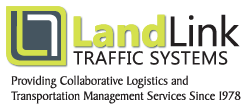 The North American trucking industry is a roughly $700 billion-a-year market, and yet its use of technology does not reflect that capitalization. This is especially evident in the way shippers and logistics services providers manage their freight with the thousands of LTL and Truckload carriers operating today. Even in today's technology boom, the majority of shippers still don’t use Transportation Management Systems (TMS) to automate the planning and execution of their domestic freight shipments. Utilizing a transportation management system to manage domestic freight shipments can measurably increase your efficiency. In this article we'll examine the benefits of using a TMS for things like carrier selection, visibility and freight spend reduction. Our source material will be a study, conducted by American Shipper between mid-August and mid-September, which incorporates feedback from 190 shippers and LSPs, as well as 21 domestic trucking carriers about their perspectives on domestic transportation management systems. The impact of this study is to understand why shippers and Logistics Service Providers use a TMS system and the benefits derived from such systems.
The North American trucking industry is a roughly $700 billion-a-year market, and yet its use of technology does not reflect that capitalization. This is especially evident in the way shippers and logistics services providers manage their freight with the thousands of LTL and Truckload carriers operating today. Even in today's technology boom, the majority of shippers still don’t use Transportation Management Systems (TMS) to automate the planning and execution of their domestic freight shipments. Utilizing a transportation management system to manage domestic freight shipments can measurably increase your efficiency. In this article we'll examine the benefits of using a TMS for things like carrier selection, visibility and freight spend reduction. Our source material will be a study, conducted by American Shipper between mid-August and mid-September, which incorporates feedback from 190 shippers and LSPs, as well as 21 domestic trucking carriers about their perspectives on domestic transportation management systems. The impact of this study is to understand why shippers and Logistics Service Providers use a TMS system and the benefits derived from such systems.
Benefits of Utilizing a TMS System
Generally speaking, the bigger a company’s freight spend, the more likely they are to be utilizing a TMS or should be. A TMS allows companies with complex transportation networks manage those networks in more consistent and efficient ways, utilizing less resources. A TMS can increase carrier selection efficiencies and help manage carrier related information. A detailed carrier profile compiles all rate and service related information to provide concise and definitive carrier selection choices for shipment sizes, lanes and service requirements. Freight routing is now an exercise in efficiency. Carrier profile information is also managed to ensure current insurance coverage, authority, hazmat certifications, CSA scores and a host of related information.
Today's shippers need to have visibility on their product in transit provided by a TMS. Shippers rely on real-time data to help understand where bottlenecks or disruptions may occur. It helps them better manage inventory and fulfillment. TMS has eliminated the shipper on the phone screaming "Where's my freight!" and replaced him with empowering, real-time data with which he can use for in-transit strategic planning.
Everything from manpower requirements to production schedules to distribution schedules can be effectively adjusted to coincide with inbound raw material. The level of visibility may vary slightly among TMS systems, based upon compatibility of systems between shipper and carrier. Implementation planning should include a fair dose of shipper-carrier collaboration to determine system capabilities and compatibilities.
Roughly half of the TMS users in the American Shipper survey estimated a 5% to 10%, hard currency, freight spend reduction. A softer cost measurement for the efficiency of a TMS is whether it educates users to better understand who their best carriers may be. This is where an automated system that plans and executes routing decisions can feed nicely into reporting tools that let shippers and LSPs evaluate their most effective partners. Shippers not using a TMS might think they know who their best carriers are but such an opinion is not as reliable as data-driven metrics. Both perspectives have merit but hard data trumps perception every time.
Is a TMS Right for Your Company?
Generally speaking, any technology application which increases efficiency and reduces cost is a worthwhile investment. When considering a TMS, you may want to start with a review of your annual freight spending. As we mentioned earlier, the bigger the freight spend the more likely a TMS implementation.
Given that the majority of the American Shipper survey respondents reported a 5% to 10% annual freight spend reduction we could use an average 7.5% times your annual freight spend to come up with a hard cost savings. Comparing that annual savings to a TMS implementation and management cost should provide some reliable numbers upon which to make your decision.
It is important to note the softer cost savings in the form of increased efficiencies, carrier management, shipment visibility and data value provided by a TMS. In this technological age one thing is certain. If you competitor is using it to increase efficiency and you’re not, you will eventually become irrelevant. So what do you do if a TMS is not a good fit for your organization due to minimal savings, implementation cost, or multiple locations? How do you leverage the available technology to remain competitive?
There is a solution. Seek out the expertise of a 3PL which has already invested in the latest TMS and solicit their advice. A qualified 3PL will do a comprehensive cost and operational analysis to determine possible cost and efficiency gains and provide a solution. An associate from Land-Link Traffic Systems will gladly advise you. To contact someone today, click the button below.



 Land-Link, a well respected professional organization, has been providing its clients with effective transportation and logistics solutions since 1978.
Land-Link, a well respected professional organization, has been providing its clients with effective transportation and logistics solutions since 1978.

